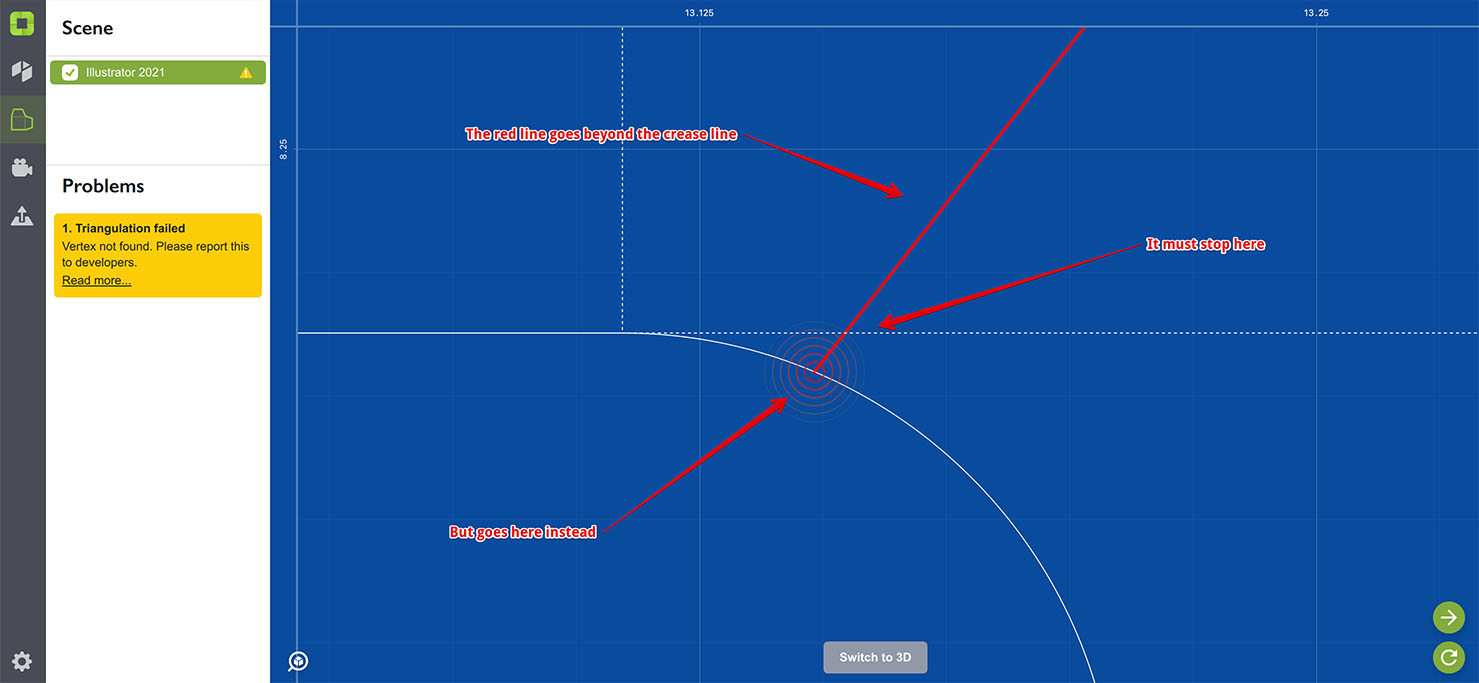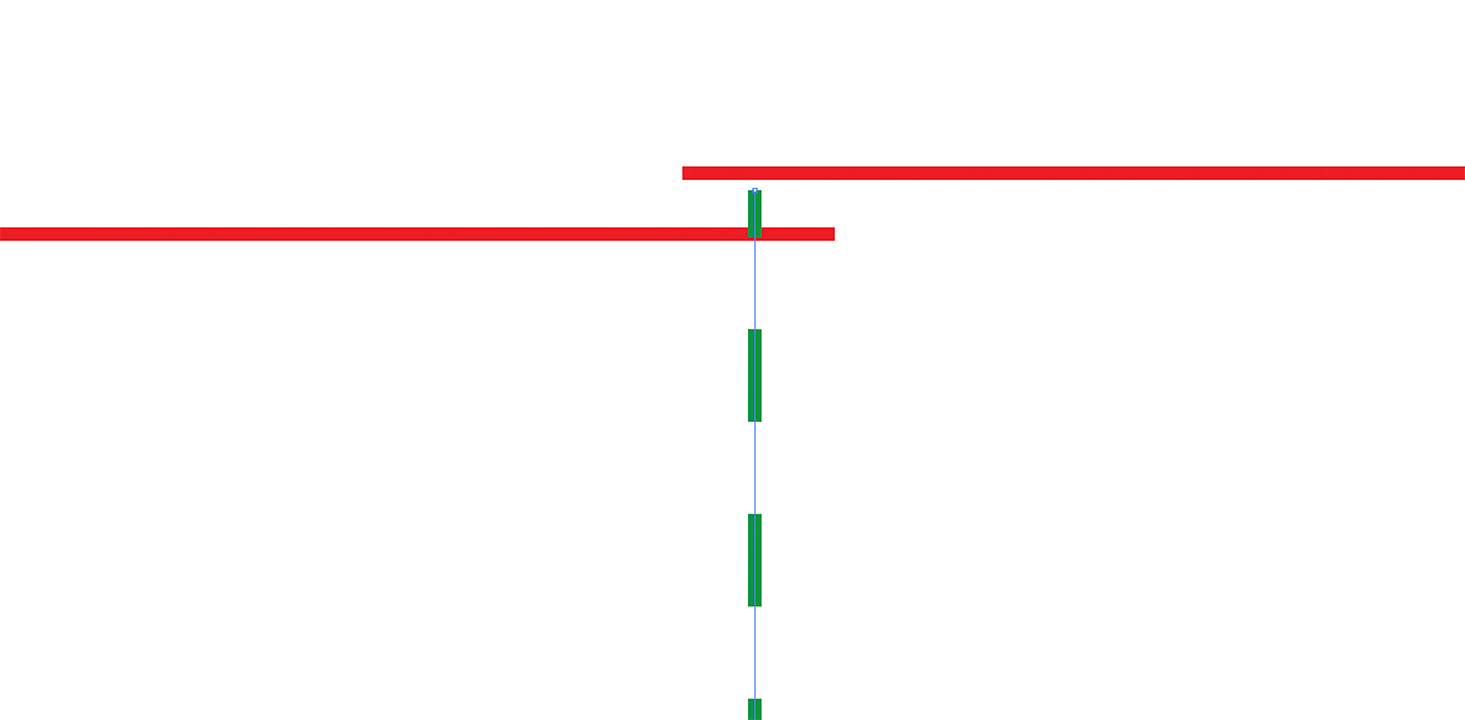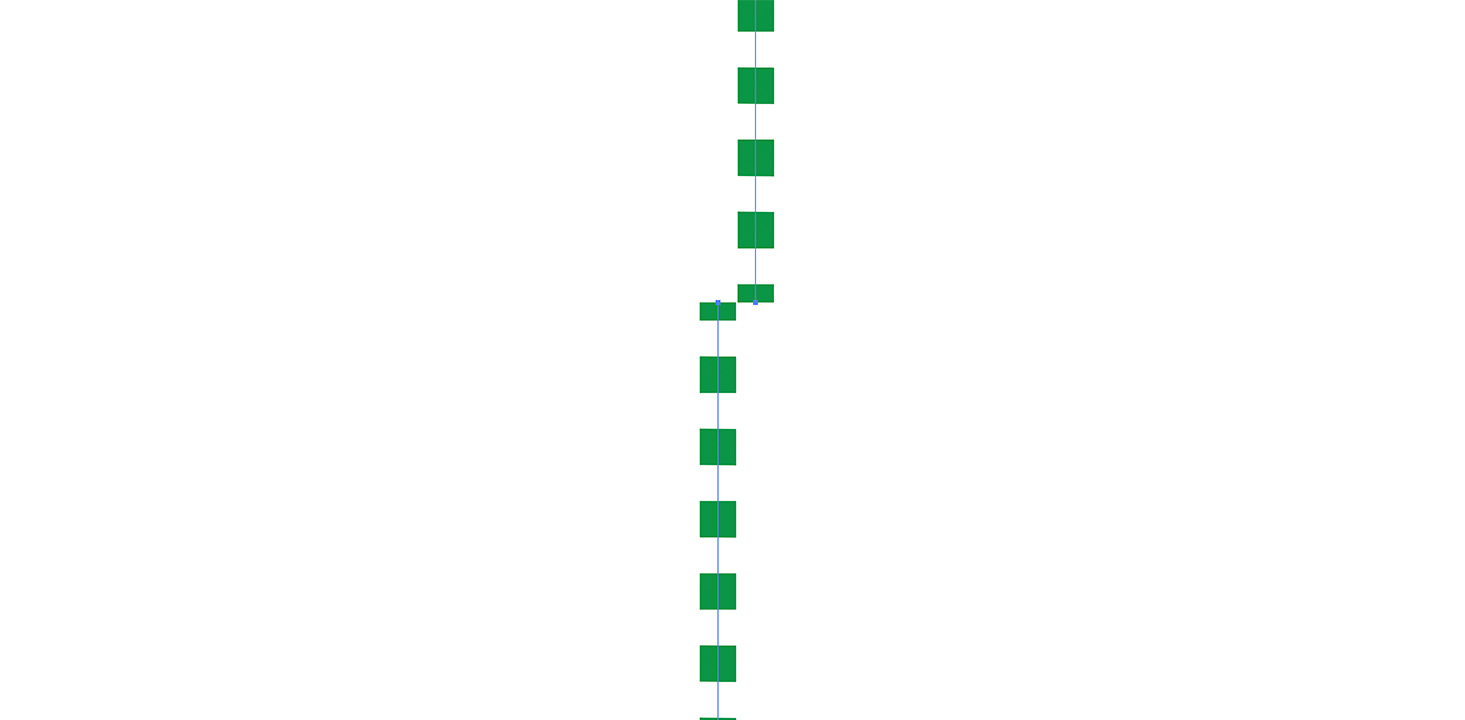Folding Engines
Since version 3.2 Origami supports selection of folding engine used for a specific dieline. We recommend to always use the latest folding engine when possible, but for some reasons you might want to use a different one. Here we discuss the differences and features of all the supported engines.
Here is the folding engine selector at the bottom of the dieline properties panel:

The default (latest) folding engine at the moment is V4. Projects created in the old versions of Origami might use older engines unless manually switched to the latest one.
Engine V4
The latest and the best folding engine at the moment. Compared to V3 it doesn’t emit “Triangulation failed” errors and provides better dieline verification.
On top of that V4 supports folding animation and usually works much faster compared to the previous ones.
Engine V3
The improved version of V2 with advanced tests for misaligned elements, small gaps and duplicated points. On top of that it folds complex shapes much faster than V2 and V1 at the same level of details.
Engine V2
This folding engine was released in Origami 3.1 and was focused on providing as much dieline diagnostic information as possible. We toughen up the dieline requirements and started reporting almost all the misaligned points, except for a very small ones.
This obviously ended up with users getting reports for the dielines folded perfectly with V1 engine. According to our tests almost all the reports were correct and fixing the issues really improved the dielines quality.
In version 2 we also added the level of details parameter, so you can adjust the quality of the curves in 3D models.
Unfortunately some issues like the one below required us to make the engine even more strict, which affected existing shapes too much.

This eventually ended up with folding engine V3.
Engine V1
This is the first folding engine we used in Origami 1 and Origami 2. It is quite tolerant to misaligned dieline elements and tries to fix everything by itself. Sometimes it works, but in many cases it ends up with weird triangulation errors.
The main reason is that if the points are misaligned Origami has to join them somewhere and this might have consequences. Here is an element of one of our test dielines:

If you zoom it out well enough, it looks like a proper join and the author expects it to be folded straight away. Origami has to merge these points into one, but where to place that merged point? Should it use one of the existing points or just make a new one in the middle? What if it moves the crease line a bit and distort the whole shape?
Here is another example from our collection:

Again, this is a very zoomed version of two crease lines which looks perfectly fine when zoomed out. Unfortunately, there is no good solution here at all. Moving any of the vertices will make a broken crease line and fail the shape at the triangulation or folding stages.
We had a lot of weird reports for V1 engine regarding triangulation. It sometimes took hours to trace down the problem and suggest the fix. This was caused by the lack of the proper dieline diagnostic in the engine and the engine itself being too flexible.
At the end of the day V1 was replaced with V2 with much more detailed dieline diagnostics.
Finally
As you may see, each new version of the folding engine tries to provide more diagnostic information, improved speed and some new features like level of details and folding animation.
Another trend is to strict the dieline requirements up, so you might get errors or warnings for the dieline that works earlier. We highly recommend checking all the reported issues as they are reported for the reason.
Note that we do not accept reports about issues with the old folding engines. If you have problems with folding a shape, consider switching to the latest folding engine and fixing the errors it reports.
Adobe and Adobe Illustrator are either registered trademarks or trademarks of Adobe Systems Incorporated in the United States and/or other countries.